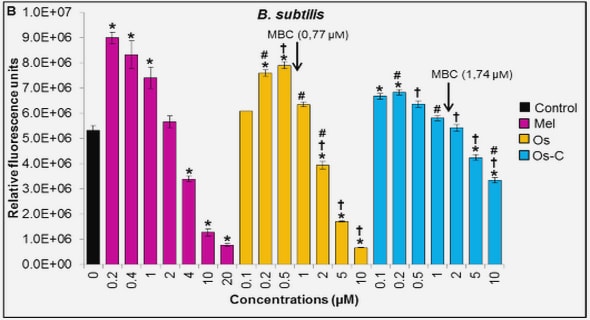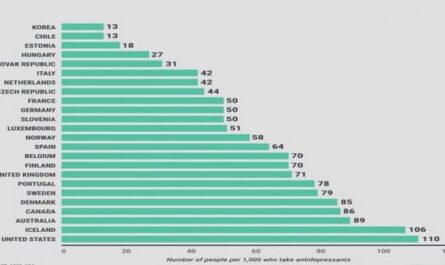Get Complete Project Material File(s) Now! »
Plasma models
A typical magnetic fusion plasma is composed of approximately 1020m−3 of ions and electrons. A complete description of all these particles require a solution of Newton-Maxwell equations for all individual particles. These equations consist of a set of 6N di erential equations which determine the N -body description of the system. This ap-proach of tracking all particles is untractable with the current high performance com-puting and even in the any foreseeable future. Therefore, the number of equations must be reduced with reasonable assumptions in order to lower the dimension of the system.
Kinetic model
Any physical properties of microscopic detail can be obtained by its position and velocity vectors in phase space. Therefore, instead of calculating the dynamics of single particles, it is useful to introduce a statistical approach with the distribution function F (r, v, t), which is the density of particles in (r, v) space at time t. The evolution of the distribution function is described by the kinetic theory.
The Vlasov equation describes the evolution of the distribution function in a 6-dimensional phase space (r, v) under the e ect of self-consistent electric and magnetic elds : ∂t ∂r ms ∂v ∂Fs + v · ∂Fs + qs (E + v × B) · ∂Fs = 0 (2.1).
A great complexity to solve the Vlasov equation emerges from the third term of Eq.(2.1), which contains both the external elds and the self-consistent elds arising from the motion of all charged particles inside the plasma. These elds satisfy the Maxwell equa-tions:
r · E = ρ/ 0 (2.2).
r · B = 0 ∂B (2.3).
r × E = − (2.4).
c2 ∂t r × B = µ0J + 1 ∂E (2.5).
where the plasma charge density ρ and the plasma current density J are obtained by taking the moments of Fs :
ρ(x, t) = s qs Z dvFs (2.6).
J(x, t) = X qs Z (2.7).
The set of equations from Eq.(2.1) to Eq.(2.7) constitutes a complete and self-consistent equations which need to be solved simultaneously. The di erent processes to resolve these nonlinear equations in the linear, quasi-linear and nonlinear approximations form the basis of kinetic theory and one generally has to use numerical methods even for a linear analysis.
GYSELA-5D : Gyrokinetic model
GYSELA (GYrokinetic SEmi-LAgrangian) is a global, full-F, ux driven, electrostatic gyrokinetic code which treats electrons adiabatically 7 in a simpli ed concentric circu-lar magnetic con guration. The time evolution of the full distribution function of each ion species (Deuterium + impurity) is governed self-consistently by a 5D non-linear gyrokinetic Vlasov equation coupled with 3D Poisson equation. In this section, the salient features of the code are presented in a concise manner. For a more detailed analytical derivation of GYSELA, the reader is referred to (Grandgirard et al., 2016).
TERESA-4D : Gyro-bounce kinetic model
Low frequency turbulence driven by micro-instabilities is responsible for the ano-malous heat and particle transport in magnetically con ned fusion plasma. Among these instabilities, trapped electron modes (TEM) might play an important role in ex-plaining the anomalous heat and particle transport observed in tokamaks. In this sec-tion, a bounce averaged gyrokinetic model, named TERESA (Trapped Element REduction in Semi-lagrangian Approach) dedicated to instabilities driven by trapped particles will be presented. TERESA is a global, full-f gyro-bounce kinetic code which covers both TIM/TEM regimes simultaneously in 4D. Unlike GYSELA, the equilibrium pro le is maintained by thermal baths and only trapped particles, both kinetic ions and kinetic electrons, are treated self-consistently. A detailed derivation is available in (Drouot, 2015).
Action and angle variables
In classical mechanics, Hamiltonian-Jacobi theory provides an useful framework by which dynamics of motion are solved with the help of a coordinate transformation. One powerful transformation often used is the transformation from a set of position-momentum (p, q) coordinates to the action-angle (J, α) variables (Goldstein, 1980). A dynamical system which shows integrable and quasi-periodic particle motions, such as tokamaks, is an ideal framework to use action and angular variables. Under this trans-formation, frequencies of periodic motions are obtained without solving the equations of motion ; and the Hamiltonian becomes function of J only. dt ∂α dt ∂J dJ = − ∂H = 0 dα = ∂H = ω (2.38).
For trapped particles, the motion of a charged particle can be separated into three parts : (i) the cyclotron motion with the Larmor radius ρc and the cyclotron frequency ωc (ii) the bounce motion characterized by the banana width δb and the bounce fre-quency ωb (iii) the toroidal precession by the major tokamak radius R0 and the preces-sion frequency ωd. These periodic motions are related respectively to the action-angle variables (J, α), which can be expressed as (Depret et al., 2000; Sarazin et al., 2005) : J1 = − ms µ α.1 = ωc(J)t + α10 J = qs α = (2.39) J2 = msvks ds α2 = ωb(J)t + α20 2π q ψ α 3 = ω d( J t α 30.
Where ψ0 is the poloidal magnetic ux at the bounce point. It should be noted that ψ is used as a radial coordinate in this manuscript since dψ = −R0Bθdr where Bθ is the poloidal magnetic eld. In a tokamak con guration, the above characteristic time-space scales satisfy the following order, ωd ωb ωc and ρc δb R0. Given that the turbulence driven by trapped particles is characterized by the order of the precession frequency ωd, the disparate time scale allows the removal of the fast cyclotron phase θc and the bounce angle θb ; the resulting bounce-averaged kinetic description preserves the invariance of the magnetic moment J1 and the bounce action J2.
Validity of the quasi-linear approximations
Before we move to the main results obtained by nonlinear simulations, it is crucial to discuss the validity of the quasi-linear theory. The two main approximations—(i) a weak uctuation level (δF F ) and (ii) no trapped particles in the saturated potential eld—are often used to justify the validity. The rst approximation which is equivalent to the condition where the distribution function F is close to the Maxwellian equili-brium is well satis ed in the core of tokamaks. As a result, the second approximation is often tested for veri cation.
To demonstrate the second approximation, we introduce a dimensionless number, named the Kubo number K de ned as follows (Kubo, 1963) : τf K = τac (3.11).
Here, τac represents the turbulence auto-correlation time, as experienced from the point-of-view of particles with zero energy. It is de ned as τac = R hφ(t)φ(t+τ)idτ /hφ2(t)i where hφ(t)φ(t + τ)i is the auto-correlation function of the potential. It is calculated at the location of the maximum saturated potential φmax of the simulation box (Figure 3.1). And τf is the ight time of a particle along the electric potential structure. The ra-tio between these two times should be lower than 1 (K < 1) in order that the particles are not trapped in the potential well. In this thesis, an analytical approach to obtain τf has been applied by assuming that particles follow a circle trajectory around the maximal electric potential φmax.
The ight time τf for a particle to travel along the circle can be obtained using the Hamiltonian relation in the angle-action variables dJ3 = − ∂H and dα = ∂H and a dt ∂α dt ∂J3 simple form of electric potential φ = φ0 cos (nα) cos (kψ) where each n, k represents the mode number in α, ψ direction and φ0 is the maximal electric potential. τf = Z dt = Z dθ − 1 dθ = 2π (3.12).
In Figure 3.2, the Kubo number K is calculated from TERESA simulations by va-rying κTi , κTe simultaneously and using the most unstable modes n and k obtained in the linear phase. For given plasma parameters (κn = 0.1 and κT = 0.05, 0.1, 0.2 and 0.3),
Table of contents :
1 Introduction
1.1 Nuclear fusion : basic concepts
1.2 Magnetic connement : Tokamaks
1.2.1 Magnetic eld conguration
1.2.2 Circulating & trapped particles
1.3 Particle transport in tokamaks
1.3.1 Turbulent transport
1.3.2 Neoclassical transport
1.4 Impurities in tokamaks
1.4.1 Impurity accumulation
1.4.2 Poloidal asymmetry of impurity density
1.5 Outline
2 Gyrokinetic model for impurity transport
2.1 Plasma models
2.1.1 Kinetic model
2.1.2 Fluid model
2.1.3 Gyrokinetic model
2.2 Numerical features of gyrokinetic codes
2.3 GYSELA-5D : Gyrokinetic model
2.3.1 Gyrokinetic Vlasov equation
2.3.2 Quasi-neutrality equation
2.3.3 Collisional operator
2.3.4 External sources
2.4 TERESA-4D : Gyro-bounce kinetic model
2.4.1 Action and angle variables
2.4.2 Gyro-bounce Vlasov equation
2.4.3 Quasi-neutrality equation
3 Impurity pinch generated by trapped particle driven turbulence
3.1 Introduction
3.2 Impurity Pinch
3.2.1 Quasi-linear impurity transport
3.2.2 Validity of the quasi-linear approximations
3.2.3 Pinch velocity from nonlinear numerical simulations
3.3 Parametric dependencies of impurity pinch
3.3.1 Thermo-diusion
3.3.2 Curvature pinch
3.4 Conclusion
4 Gyrokinetic modelling of light to heavy impurity transport
4.1 Introduction
4.2 Neoclassical impurity ux
4.2.1 Impurity ux with uniform density distribution
4.2.2 Impurity ux with poloidal asymmetries
4.3 Numerical results
4.3.1 Impurity ux with poloidal asymmetry driven by turbulence .
4.3.2 Poloidal asymmetry driven by background turbulence
4.4 Conclusion
5 Eects of toroidal rotation on impurity transport
5.1 Introduction
5.2 Theoretical approach
5.2.1 Distribution function with toroidal rigid rotation
5.2.2 Poloidal asymmetries generated by toroidal rotation
5.2.3 Neoclassical and turbulent impurity transport in rotating plasma
5.3 Numerical results
5.3.1 Enhanced poloidal asymmetry by toroidal rotation
5.3.2 Impurity particle ux
5.4 Conclusion
6 Conclusion
A Quasi-linear impurity transport by uid approach
B Perpendicular ux and CGL pressure tensor
B.1 Magnetic curvature
B.2 Parallel frictional force
C Impurity density distribution from the parallel dynamics
Bibliographie

